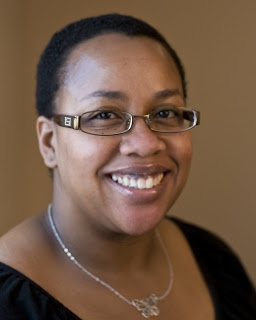 |
| Courtney Louise Young |
For reasons that are both professional and personal, I share this commitment to diversity. On Dec. 29, I applied and was accepted for membership in the Diversity MIG.
This week, I responded to a request by co-chair Melissa Cardenas-Dow that members share introductions. She asked that respondents include their affiliation and something that they like to do during their spare time.
I responded that among the sewing and needlecrafts that I like to do, perhaps my most unusual pursuit is “yarn bombing.” I included a link to my Facebook page, “Yarn Bombing at Your Library.”
As for my reasons for joining the MIG, and what I hope to contribute: I’m interested in ways that libraries offer services to patrons of all abilities, as well as in ways that the library profession reflects these demographics.
One area of special interest for me is library service to patrons with autism. I want to ensure that an autistic viewpoint contributes to this discussion.
And from the experience of walking with a cane while I recovered from an injury, I have an interest in barriers to access for people who rely on assisted mobility, and how practices in society (and the library) contribute to or eliminate those barriers.
I told the group that my community has a tradition of “reserving” curbside viewing space the day before the Independence Day Parade. The first year that we lived here, residents strewed blankets and boards across the library’s mobility walkway.
Walking with a cane, it was difficult enough to pick my way over this uneven terrain, and I believed that someone using a wheelchair would have found their way entirely blocked.
The local newspaper printed a letter to the editor in which I shared my concern, and this past summer the mobility walkway remained clear of obstacles. In a follow-up letter, I expressed appreciation for unrestricted access to the library.
I hope to draw upon these experiences when discussing aspects of diversity. It’s inspiring to think that, to paraphrase Cardenas-Dow when inviting us to post our introductions, what we do may have relevance to the entire ALA and the profession of library service.
No comments:
Post a Comment
Robust debate and even unusual opinions are encouraged, but please stay on-topic and be respectful. Comments are subject to review for personal attacks or insults, discriminatory statements, hyperlinks not directly related to the discussion and commercial spam.